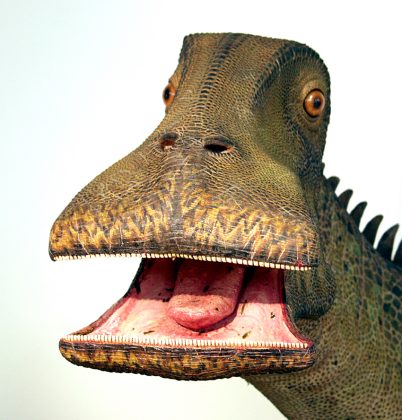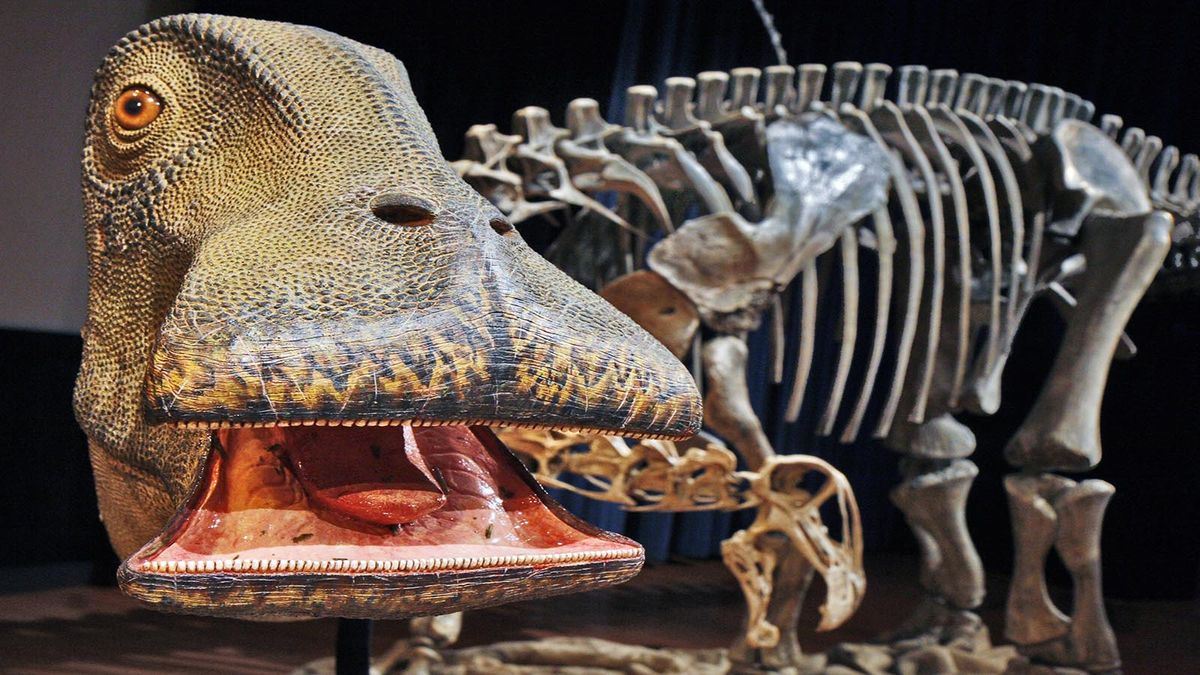Nigersaurus: Unraveling The Mystery Of The Dinosaur With 500 Teeth
Meet Nigersaurus: The Oddball Sauropod of the Cretaceous Period
Nigersaurus taqueti (pronounced NI-juhr-SOR-us) was a unique herbivorous dinosaur that lived approximately 110 to 115 million years ago during the Early Cretaceous period. Its fossilized remains were discovered in the Sahara Desert, in what is now the Republic of Niger, hence its distinctive name. Unlike its larger sauropod cousins, Nigersaurus was a modest 30 feet (about 9 meters) long, making it quite small for a long-necked dinosaur. Despite its comparatively small stature, Nigersaurus possessed features that made it truly one-of-a-kind. Its skull, surprisingly light and delicate, housed a wide, almost vacuum-cleaner-like muzzle. This wide, square-shaped mouth was perfectly adapted for its specific diet, which consisted primarily of low-lying vegetation. But the real marvel of Nigersaurus was hidden within that broad snout: its unparalleled dental system.The Dental Battery: How 500 Teeth Fit in One Mouth
The concept of a dinosaur with 500 teeth might sound like something out of a fantasy novel, but for Nigersaurus, it was a biological reality. However, it’s important to understand that not all 500 teeth were active and visible at the same time. Instead, Nigersaurus possessed what paleontologists call "dental batteries." Imagine rows upon rows of tiny, slender teeth, constantly being replaced like a conveyor belt. This is precisely how Nigersaurus's mouth operated. Here's a breakdown of its incredible dental structure: * **Active and Replacement Teeth:** Underneath each active tooth, there wasn't just one, but a column of nine replacement teeth waiting in the jaw, ready to erupt and take its place. This rapid replacement system ensured that the dinosaur always had sharp, functional teeth. * **Numerous Columns:** Nigersaurus had an astonishing number of these tooth columns. There were approximately 68 columns in its upper jaws and 60 columns in its lower jaws. * **Total Count:** When you add up all the active teeth and their nine-deep replacement columns, the total number of teeth within the jaw at any given time exceeded 500. This continuous regeneration meant that a Nigersaurus could replace its entire set of teeth every 14 days! This sophisticated dental battery system, also observed in other herbivorous dinosaurs like hadrosaurs and ceratopsians, allowed Nigersaurus to maintain an efficient chewing mechanism, despite the constant wear and tear on its teeth from processing tough plant material.A Specialized Grazer: Why So Many Teeth?
The extraordinary dental setup of Nigersaurus was a direct evolutionary response to its unique diet and feeding strategy. While many sauropods browsed on high-reaching leaves from trees, Nigersaurus was a dedicated low-level grazer. Its wide, square-shaped muzzle was perfectly designed to sweep across the ground, cropping vast amounts of ferns, cycads, and other low-lying vegetation. Think of it like a prehistoric lawnmower. The sheer volume of plant material it consumed daily required an incredibly efficient processing system. The hundreds of small, slender, and rapidly replaceable teeth acted like a finely tuned grinding machine. Its light skull, though seemingly delicate, was robust enough to support this powerful mouth, enabling the dinosaur to continuously shear and process soft plants. This unique adaptation allowed Nigersaurus to thrive in its environment, efficiently extracting nutrients from a food source that other dinosaurs might have overlooked or found difficult to process.Discovery and Legacy
The discovery of Nigersaurus taqueti, particularly its remarkable dental features, has provided invaluable insights into the diversity and evolutionary adaptations of sauropod dinosaurs. First formally described in the year 2000, its recognition has added a fascinating chapter to our understanding of prehistoric life. The name "Nigersaurus" itself is a tribute to the country where its fossils were unearthed, highlighting the importance of regional discoveries in paleontology. While Nigersaurus may not be as widely known as Tyrannosaurus Rex or Triceratops, its unique dental structure certainly places it among the most intriguing dinosaurs ever discovered. It serves as a powerful reminder of the incredible ways in which life adapts to its environment, pushing the boundaries of what we might consider possible. In conclusion, the dinosaur with 500 teeth is none other than the Nigersaurus. This relatively small, 30-foot-long sauropod, which roamed Africa around 110 million years ago, developed an unparalleled dental battery system. With over 500 active and replacement teeth arranged in columns, it could rapidly replace its worn teeth, allowing it to efficiently graze on low-lying vegetation with its wide, vacuum-cleaner-like muzzle. Nigersaurus stands as a testament to the diverse and often surprising evolutionary paths taken by life on Earth, showcasing an extraordinary adaptation that made it a true marvel of the Cretaceous period.
Nigersaurus (the dinosaur with 500 teeth!) | Dinosaurs - Pictures and Facts

Nigersaurus: The 'Mesozoic Cow' With More Than 500 Teeth | HowStuffWorks

What dinosaur has 500 teeth - YouTube